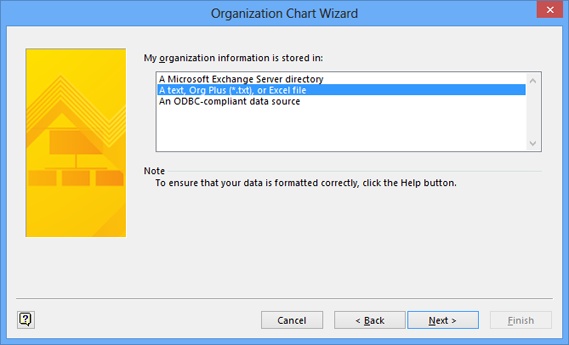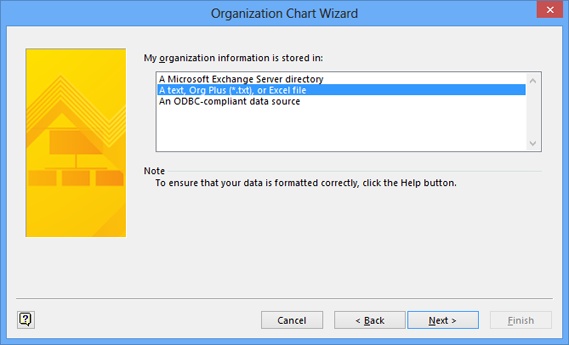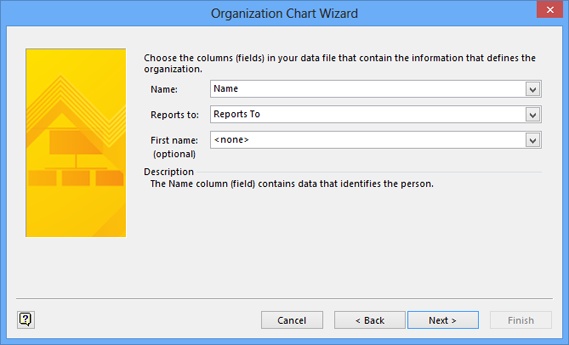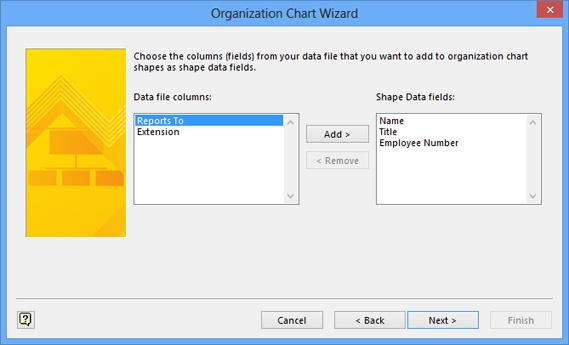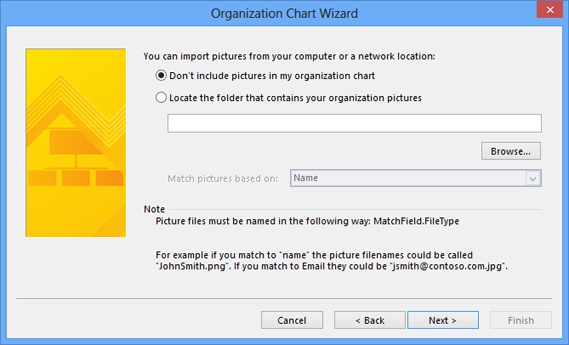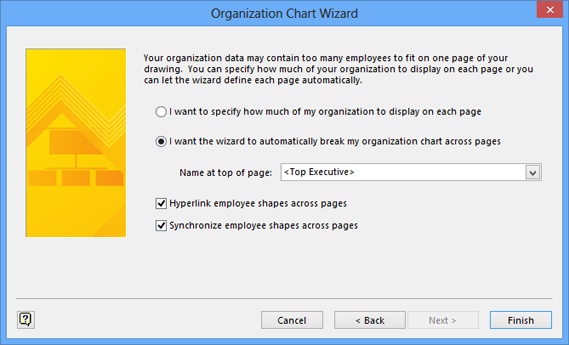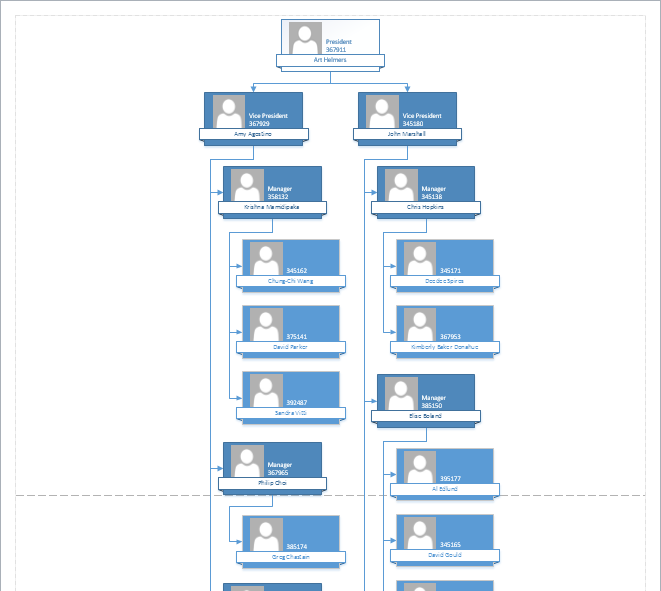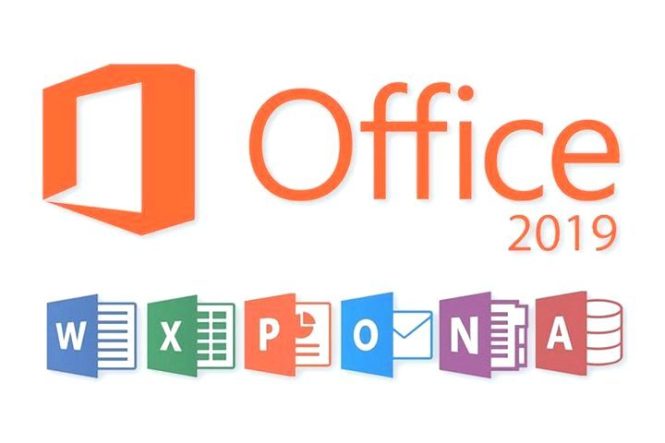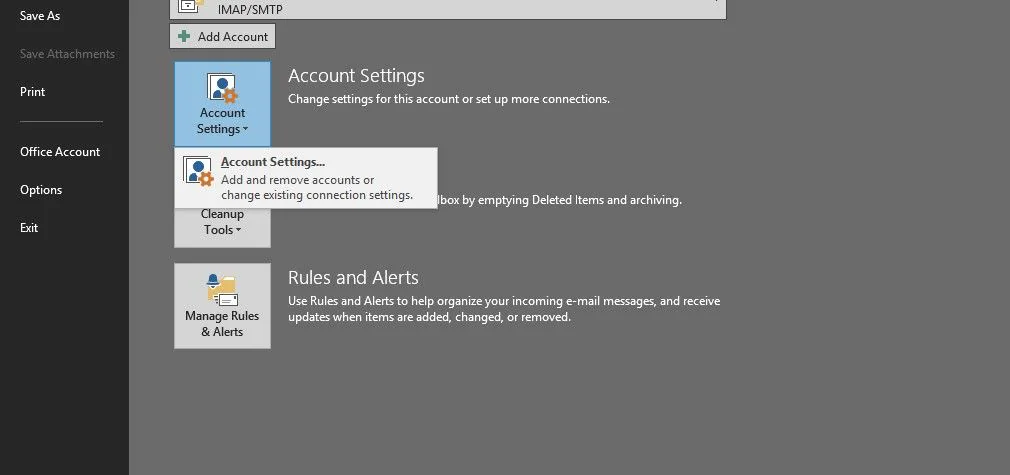What if you already have your organization data available in electronic form? For example, you might have:
- An Excel workbook that already contains names and reporting information.
- A human resources or Enterprise Resource Planning (ERP) system that can generate an Excel file or a text file.
- Organization data in a Microsoft Exchange Server directory.
- Organization data in a Microsoft Access, dBase, or other database.
In all of those situations, the org chart wizard can help you create your chart.
In this exercise, you’ll use data in an Excel workbook to build an organization chart.
- Start Excel and open the Org Chart Data_start workbook so you can look at the data that will be used in this exercise. In particular, notice that there are columns for Name, Title, Reports To, Employee Number, and Extension.
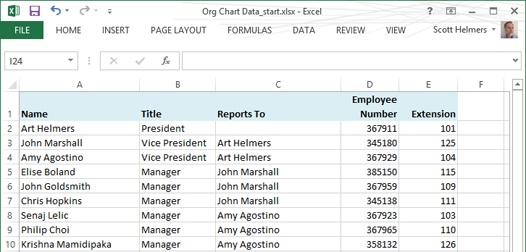
- Close Excel, and then start Visio.
- On the New page, click Categories, click Business, and then double-click the Organization Chart Wizard thumbnail. The first page of the wizard appears.
Tip
If the wizard doesn’t appear, simply click the Import button in the Organization Data group on the Org Chart tab.

- Click Next. The data source type page appears.

- Click A text, Org Plus (*.txt), or Excel file , and then click Next. The file selection page appears.
- Click the Browse button on the file selection page, and then, in the resulting file open dialog box, navigate to the Org Chart Data_start workbook that you viewed in step 1. After selecting the correct file, click the Open button, which causes the file name you selected to appear in the Locate the file that contains your organization information box.

- Click Next. There is a slight pause as Visio opens and reads the data in your spreadsheet.
The Organization Chart Wizard uses the column names, if any, in your spreadsheet to determine which columns hold the name and reporting structure information. It displays the column names that seem to be the best match in the next wizard page.

Because the Org Chart Data workbook contains columns called Name and Reports To, the assumptions made by Visio are correct as shown. If the assumptions are not correct, click the arrows to the right of Name and Reports To in order to select the correct columns. Notice you can specify that a separate column contains employees’ first names, if that is the case.
- Click Next to display a page where you can indicate which employee data will be displayed on each shape in the chart. The wizard assumes that you want to display the name and title fields, so those fields are preselected on the right side of the page.

- In the Data file columns section of the page, click Employee Number, and then click the Add button to move it to the Displayed fields section. Finally, click Next.
On the wizard page that appears, you determine which spreadsheet data, if any, should be stored in each organization chart shape. This is a separate and unrelated decision from the one on the previous page. You can still display data on the org chart shapes even if you don’t store data in the shapes.
Tip
The primary reason to store data in org chart shapes is so you can run reports or use the data in other ways without the need to revert to your original data source.

- Hold down the Shift key while clicking Extension, which selects everything in the Data file columns section, click Add, and then click Next.
Tip
You can use the standard Windows conventions for selecting multiple items in the Data File Columns section:
- Hold down the Shift key and click to select everything from the current selection up to and including the item you click.
- Hold down the Ctrl key and click to select noncontiguous items.
- On the picture import page that appears, click Next. You will not import pictures in this exercise, but you will in the one that follows.

- On the final wizard page, you can choose among some of the Organization Chart Wizard’s powerful layout options.

Accepting the default selection of I Want The Wizard To Automatically Break My Organization Chart Across Pages lets the wizard figure out how much to fit on each Visio page. The <Top Executive> option tells Visio to select the person who doesn’t report to anyone else as the top shape on the first page of the org chart. If you prefer to select a specific person, such as a department head, you can click the arrow to choose anyone in your list.
Clicking I Want To Specify How Much Of My Organization To Display On Each Page takes you to a wizard page not shown here, and allows you to more directly control how much to fit on each org chart page.
The Hyperlink Employee Shapes Across Pages check box specifies whether the wizard should add hyperlinks when org charts consist of multiple pages. For example, if a manager’s direct reports don’t fit on the page with the manager, the wizard will leave the Manager shape on the original page and also place it on a subsequent page, along with that manager’s direct reports. A check mark in this option tells Visio to add links in both Manager shapes, making page-to-page navigation simpler.
The Synchronize Employee Shapes Across Pages check box also applies to the scenario described in the preceding paragraph. A check mark in this option tells Visio to update the second shape if you change the data in the first one.
- Click Finish. The completed organization chart appears in the Visio drawing window, however, the default style and layout that were applied are not very practical for this particular organization chart. In the exercise that follows, you’ll reformat the organization chart using alternate styles and layouts.
Tip
Notice that the Belt org chart style uses different shades of color to indicate different position levels in the organizational hierarchy.

Note
CLEAN UP Save your drawing as Org Chart using Wizard and then close it.
Tip
The org chart wizard correctly connects each group of people to its respective boss, but you cannot control where the wizard places people on the page. You can use the buttons in the Arrange group on the Org Chart tab to relocate people and groups after the wizard has created the diagram. However, you can’t control how the wizard does the initial placement.
